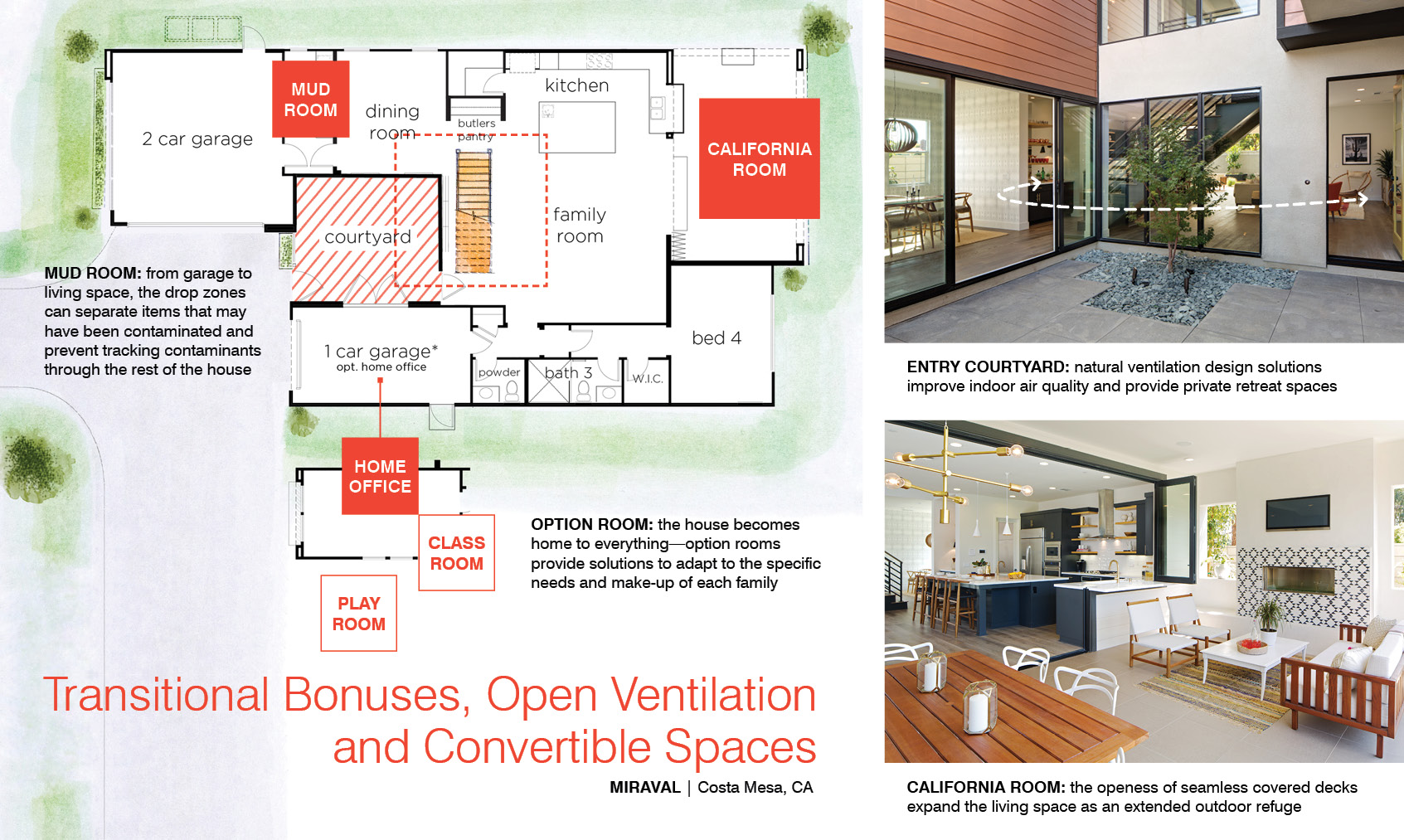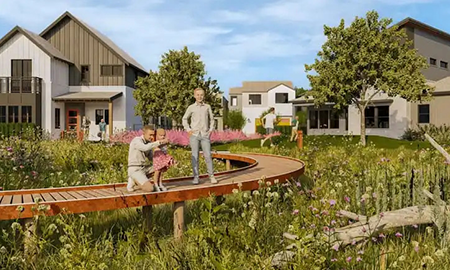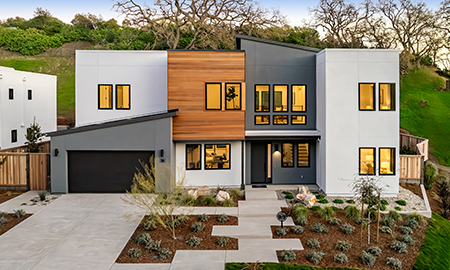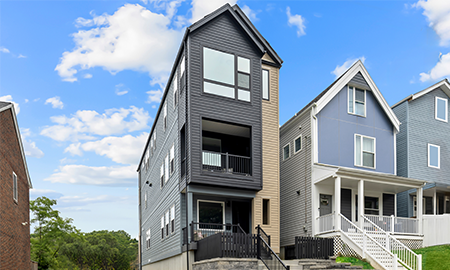Incorporating ADU's (Accessory Dwelling Units) to single-family homes as an option for buyers has typically been used as a rental, a landing pad for college students returning home, or as a multigenerational suite for aging relatives. However, it can also function as a second quarantine space, especially for an older family member, someone returning from a trip, or someone in the medical profession in times such as these. It can also become a home office, affording greater privacy when sensitive business conversations must be had in the home setting.
FLOOR PLAN ADAPTABILITY
Designing floor plans with flexibility in mind not only allows a home to grow with a buyer through life's stages, it also provides an added level of adaptability for a family sheltering in place. For instance, bedrooms on the first floor that can flex to a classroom for students, a home office, or a home gym. Additionally, kitchen management centers and ‘cozy corners' and ‘away spaces' – as coined by Sarah Susanka – can do double duty as small second office or study spaces. Just as importantly, these can also function as retreat spaces for meditation or prayer or to simply get away, supporting the self-care that is necessary to our mental health. In larger homes, design spaces that can be a playroom, hobby, game room or home theater, all the things you would go out to do without a pandemic. Also, instrumental to our overall health and wellbeing is access to the outdoors. Access to private outdoor space, such as backyards, covered decks and California Rooms that seamlessly expand the home creates much needed outdoor places of refuge, which is particularly needed when access to community open space is limited by social distancing protocols.

PRIORITIZING SAFETY AND SECURITY
Drop zones, also known as mud rooms or owner's entries, which are often off the garage, create a space to drop the briefcase, the backpack, the keys, and so on. It also becomes a space to remove items that may have been contaminated from being outside before tracking that throughout the rest of your house and exposing your family. Including generously sized pantries, even in smaller homes, gives people places to store dry goods and other non-perishables, which becomes even more important when it's necessary to limit the number of trips to the grocery store.
Coded delivery drop boxes or spaces, which have been much more common in multifamily designs, offers more than just protection from porch pirates. As our already growing reliance upon delivery is accelerated with an added emphasis on limiting physical interaction, these boxes also limit exposure for both delivery personnel and the recipient. Add hand sanitizers at doorbells or hand wipes to clean packages before bringing them inside for an extra protective measure. Keyless entries for doors and gates further limit the need to touch communal surfaces not to mention the added convenience they provide.
HEALTHY HOMES TECHNOLOGY
When spending extended periods of time indoors, indoor air quality increases in importance. The integration of natural ventilation design solutions as well as air purification systems decreases the spread of illness while also supporting everyday health. Consider also the installation of kitchen and bathroom fixtures that are touchless or made of materials resistant to viruses and bacteria. Bathrooms when shared amongst multiple family members are a common hotspot for spreading illness, regardless of pandemics. Therefore, self-flushing toilets, automatic faucets, and using fixtures, especially for doorknobs, that are resistant to virus and bacteria can go a long way in keeping healthy family members healthy when someone in the home is ill.
Whatever challenges come our way, maintaining our connections to friends and extended family is vital to our individual and societal wellbeing. Designing homes to support robust internet capabilities supports the technologies that help us stay socially close even when we're physically distant. For example, why not design a large screen in the dining room to facilitate virtual dinner parties. You could have something delivered from the same place and talk about the food together or play a game. Afterall, many of us have friends and family we're physically distant from even when we're not facing a pandemic. The fresh design perspectives coming out of this crisis can help us be more socially connected all the time.







